Fave Five Hidden Cities and Sites in Bavaria
Owner and CEO of Pride Travel Marc Kassouf shares his favorite finds in Bavaria, Germany.
Germany, as a destination, offers a wealth of options when choosing cities and attractions for our clients; even an area seemingly as well defined as Bavaria presents a number of unique towns and sites. Each of the five picks listed below offers unique experiences and what I deem to be among the best sites in Southern Germany.
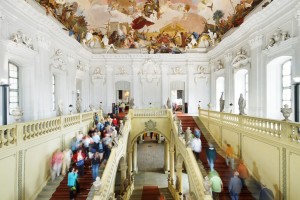
The opulent entry hall of Wurzburg’s Residenz, designed to awe and humble even the most stately of visitors. (c) CTW Wurzburg
Wurzburg
The gateway to the Romantic Road, running south to fairytale-like castles, Wurzburg can serve as your client’s or group’s hub, with its good selection of hotels and various classes of accommodations. Nestled about halfway between Nurnberg and Frankfurt, Wurzburg offers great strolls through its revitalized old town center, and a historic bridge spanning to a castle-like fortress on a hill. The bridge is almost an attraction unto itself, with several statues, great vantage points and a restaurant on one end. The city’s gem is the restored Wurzburg Residenz palace with its opulent interiors and elaborate furnishings (much of the palace was destroyed during World War II, but was painstakingly restored). The adjacent Staatlicher Hofkeller was the wine cellar of the palace and survives intact today as an attraction, wine bar, cellar and private function space available for events, lunches or dinners for your groups or FITs. It offers a uniquely singular experience featuring archeology, culture and culinary highlights.
Rothenburg ob der Tauber
The Bavari tower and city wall, flanked by a bright golden half-timbered house, is the most photographed spot of Rothenburg Ob der Tauber, Bavaria. (c) PRIDE Travel / Marc Kassouf
Rothenburg ob der Tauber lies atop a hilly plateau, above the Tauber River. It boasts a Bavarian wall, towers, half-timbered houses and historic buildings. I found that at every corner, there was a picture-perfect sight. For accommodations, look no further than the Hotel Eisenhut, a set of adjoining row houses just off the main square that have been lovingly restored and portioned into unique rooms where no two are alike in layout or furnishings. The staff is exceptionally attentive, and breakfast in the great hunting hall is both evocative and scrumptious. Without a doubt, the one must-do activity in town is a night watchman tour, where guests follow the night watchman on his rounds around town, lit by the amber glow of lamp light.
Bamberg
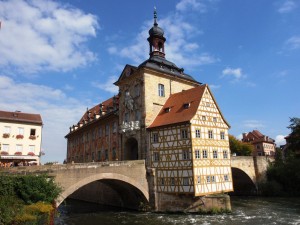
Bamberg’s picture-postcard spot reveals the Rathaus, the old city hall, perched atop a bridge. (c) PRIDE Travel / Marc Kassouf
A quick day trip from Wurzburg is Bamberg, with its many historic accommodations and modern amenities. The town itself is the main attraction, having earned the UNESCO World Heritage Site distinction. What is most surprising about Bamberg, however, is that it’s a living historical city and not a museum. Here, the old is persevered, thankfully spared during WWII bombings, and the new is adjusted to fit along side it.
Bambergers are, by nature, pragmatic and flexible, learning to appreciate the living history surrounding them while still having access to all the modern facilities of city life. As testament to this harmonious dichotomy, Bamberg sports a quaint gay bar on one of its main squares adjacent to historic landmark buildings. While certainly not a cosmopolitan city by any means, the vibrant community has grown to appreciate living within a world relic. Architectural sights include the must-see buildings atop the Cathedral Hill, including Bamberger Dom, where visitors can get treated to a free organ concert at noon, space permitting. There are also four museums in the area, and the view from the hillside is only exceeded by the lookout point atop Michaelsberg where St. Michael’s Monastery resembles a fantasy castle with its turrets and walls. Every itinerary must include a stroll by Little Venice on the lower river, with its quaint half-timbered houses and villas, each unique enough to draw even German tour groups on weekends. Clients can end a great day, or several, by visiting one of Bamberg’s many famed beer gardens. Originally built as gardens atop beer keg cellars, these thriving restaurants offer unique menus with local fare. Mahrs Braeu Keller, for example, offers a brewer’s menu showcasing local foods and beer pairings.
Aschaffenburg
By far the most hidden of the five picks, Aschaffenburg, has the potential to surprise, delight and amaze your clients. It is best offered as a day trip from either Frankfurt or Wurzburg.
Aschaffenburg’s lack of fame belies its many hidden attractions and unique sights. One of these attractions, a 12th-century abbey church, houses a surprisingly rich modern museum of artifacts (make sure to tell your clients about the treasury display and its unique twin reliquaries crafted from gold and encrusted with precious stones). Nearby, Johannisburg Palace is a beautiful building sitting practically on the edge of the Main River; its cafe is one of only two ways to sample the unique Pompejaner wine, which is divided amongst the state and city and typically reserved for visiting VIPs and the lucky few who stumble upon it on the palace’s cafe menu. Take a leisurely stroll along the river boardwalk, with its elevated view of the river below, passing amazing gardens, shady nooks and vantage points. Most unique is the Pompeiianum at the end of the walk, a complete replica of a Pompeian house reproduced to the last detail by King Ludwig I. Created in what is Bavaria’s mild climate, it offered an attraction in the early 19th century, well ahead of its time. Inside, visitors to the site will marvel at the detail and painstaking quality with which the house was recreated.
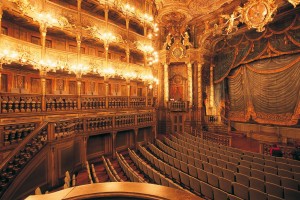
The ornately decorated Magrival Opera House hides behind a modest stone exterior, Bayreuth, Bavaria. (c) Bayreuth Tourismus
Bayreuth
Visitors to Bayreuth can indulge in authentic local Franconian wines and cuisine, and music and opera fans will delight at Wagner’s Festival Hall, originally built as a temporary performance theater with amazing acoustics. But this modest building pales in comparison to Bayreuth’s Margravial Opera House. So detailed, so exceedingly luxurious are the Margravial Opera House’s interior carvings and paintings that the nobility at the time requested a plain facade for the building, designed to suppress even the remotest thought of rebellion by the common people.
To really wow any traveler, consider including a well-hidden local secret to the itinerary: the Eremitage esplanade of garden and fountain statuary. Clients will walk under Old World arches and emerge upon a building whose walls are encrusted with chipped, colored stone and rock, forming a rare exterior fresco. When planning as part of a larger itinerary, Bayreuth is an excellent day trip from either Wurzburg or nearby Bamburg.
Travel Insider
Marc Kassouf is owner and CEO of Pride Travel, specialists in catering to the needs of gay and lesbian clientele. Kassouf holds numerous industry certifications, most notably by CLIA, the Travel Institute and various destination visitors’ bureaus. He sits on two board committees of the International Gay and Lesbian Travel Association, has traveled to almost four dozen countries and has sailed on more than 60 cruises.
First published: TravelAge West magazine, October 22, 2010

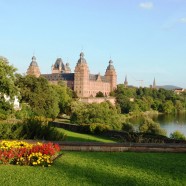





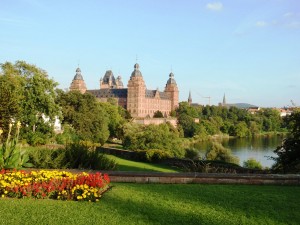

 Editor Marc Kassouf owns Pride Travel agency. He holds numerous travel industry certifications and has received one of the travel industry’s most prestigious awards, the WAVE TrendSetter, four times; the TrendSetter recognizes excellence and exceptional achievements of travel agencies and their executives. Kassouf sat on two board committees of the International Gay and Lesbian Travel Association, has traveled to nearly four dozen countries and has sailed on more than 60 cruises.
Editor Marc Kassouf owns Pride Travel agency. He holds numerous travel industry certifications and has received one of the travel industry’s most prestigious awards, the WAVE TrendSetter, four times; the TrendSetter recognizes excellence and exceptional achievements of travel agencies and their executives. Kassouf sat on two board committees of the International Gay and Lesbian Travel Association, has traveled to nearly four dozen countries and has sailed on more than 60 cruises.







